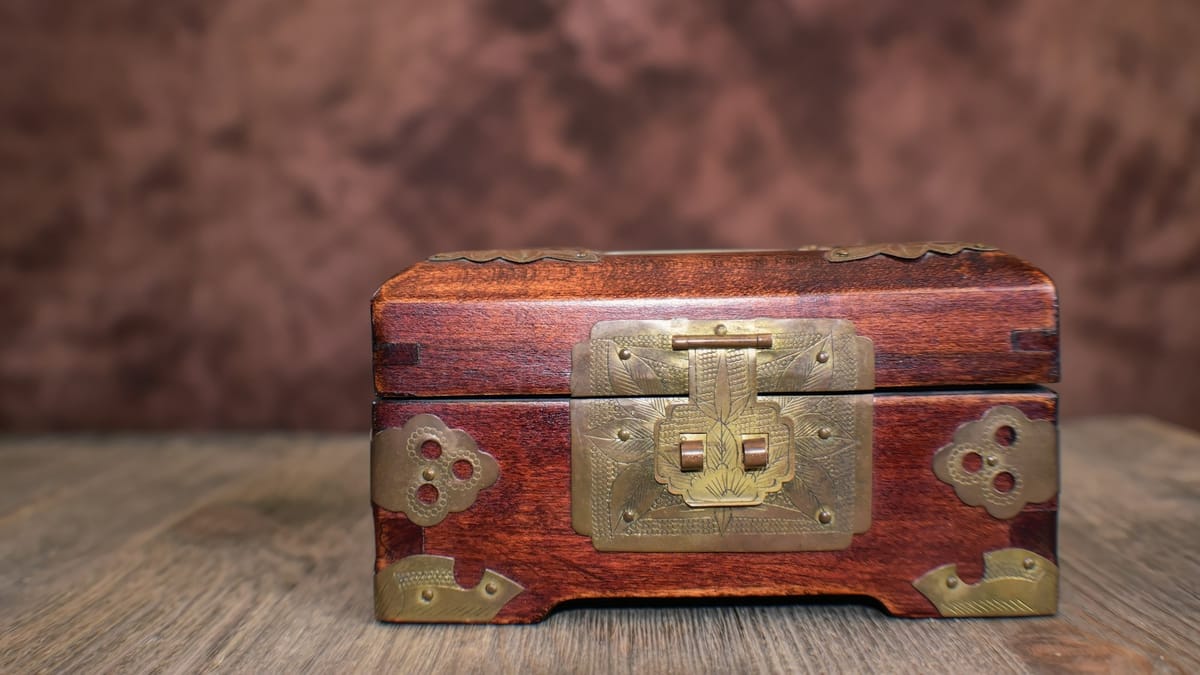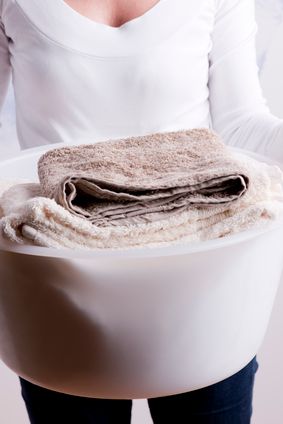Creating Memory Boxes for Seniors: Tips and Ideas
Memory boxes are a valuable tool for seniors, helping them stay connected to their past. They come in different forms like baby memory boxes and wedding memory boxes, as well as those for loved ones who have passed away.

Imagine having a treasure chest filled with precious memories, sentimental keepsakes, and items that tell the story of your life. Memory boxes are exactly that - a beautiful and functional way to preserve and cherish the moments and memories that make us who we are. In this audiocast, we will explore the importance of memory boxes, different types of memory boxes, and how to create one that is meaningful and special for yourself or a loved one.
Short Summary
- Memory boxes are a valuable tool for seniors with dementia, helping them stay connected to their past.
- They come in different forms like baby memory boxes and wedding memory boxes, as well as those for loved ones who have passed away.
- Create meaningful memories by choosing the right box and involving family & friends - add photos/mementos/family heirlooms that represent passions & hobbies!
The Importance of Memory Boxes
Memory boxes are more than just a collection of items - they are powerful tools that help preserve precious memories, provide reminiscence therapy, and help seniors with dementia stay connected to their past and loved ones. The memories stored in a memory box should focus on the good times, like positive memories only. A well-curated memory box can spark conversations, enable storytelling, and bring a sense of joy to our lives.
For seniors with dementia, memory boxes are particularly beneficial. They help to preserve precious memories, provide reminiscence therapy, and allow seniors to remain connected to their past and loved ones. Including photos, special clippings, and other mementos with a strong emotional connection to the senior can create meaningful memory box ideas for seniors with dementia.
Types of Memory Boxes
There are various types of memory boxes, each with unique contents and themes. Some of the most common memory boxes include baby memory boxes, wedding memory boxes, and memory boxes for loved ones, which can contain family heirlooms passed down through generations.
In the following sections, we will delve deeper into each of these types of memory boxes and discuss the items that can be included in them.
Baby Memory Box
A baby memory box is a special collection of items that help you remember a baby’s life. It can include items such as:
- their first tooth
- a lock of hair
- a baby book
- their hospital outfit
- a snap of the baby on the hospital scale
- cards of congratulations
- the outfit they wore in the hospital
You could also add other keepsakes that hold sentimental value.
For those commemorating a baptism, a baptism memory box can hold all the special items from the ceremony, like the clothes, bib, hat, and shoes the child wore, along with their blanket and other accessories. The candle that was lit during the ceremony can be kept as a special reminder of the service. Keepsakes such as cards, flowers or other mementos can also be stored to commemorate the event.
Wedding Memory Box
A wedding memory box is a collection of items that remember a wedding day. It can include:
- The wedding dress
- Veil
- Shoes
- Jewelry
- Groom’s clothing items
- Invitations
- Guest book
- Cake toppers
- Love letters
- Handmade cards
- Photographs
- Other wedding mementos, depending on individual preferences and cultural traditions.
Some great items to include in a wedding memory box are:
- A cake topper
- Photobook
- Cards and notes
- A photo of the wedding dress
- Pictures
- A DVD of the day
- Anything special you did or received during the wedding
- A copy of the wedding service or copies of poems/readings
- Mementos from your honeymoon
- Dried flowers (especially the wedding bouquet)
- One of the wedding favors
- Place settings for the bride and groom
- The wedding breakfast menu
Loved Ones' Memory Box
A loved one’s memory box is a special collection of items designed to remember someone who has passed away. Items that can be included in such a memory box include:
- Clothing
- Jewelry
- Diaries
- Notes
- Photos
- Awards
- Funeral service sheet
The purpose of a memory box for a loved one is to keep mementos from someone who has passed on, allowing you to always remember them and the special memories you shared.
The funeral service sheet holds particular importance in a memory box for a loved one, as it tells their life story and can be a touching tribute to their memory.
Memory Boxes for Alzheimer's and Dementia Patients
Memory boxes for Alzheimer’s and dementia patients are designed to help those living in an unfamiliar environment feel more at home, providing a way to display memories and keepsakes while maintaining the functionality of an assisted living environment. Memory boxes for Alzheimer’s patients, as well as those with dementia, can come in various forms, such as recess-mounted boxes or those with signage and the resident’s photo to help them navigate and feel a sense of familiarity.
In the following sections, we will explore these types of memory boxes in greater detail.
Recess Mounted Memory Boxes
Recess mounted memory boxes are installed into the wall of an assisted living facility. They not only look great, but also provide a place for residents to store items that have special meaning to them. A recess-mounted memory box can hold anything that has special meaning to the person it’s being made for, such as a baby’s toy, a blank postcard, or any item reflecting the person’s interests or favorite memories.
When creating a recess-mounted memory box, follow these steps:
- Select the right box.
- Organize the contents.
- Involve family and friends in the process.
- Ensure that the memory box is securely attached to the wall.
Recess-mounted memory boxes, such as a seashell shadow box, are a great way to keep cherished items safe and secure while also showcasing the resident’s interests and passions to others in shadow boxes.
Memory Boxes with Signage and Resident's Photo
Memory boxes with signage and a resident’s picture can be a valuable tool for Alzheimer’s and dementia patients, as they help them navigate their environment and feel more at home. These memory boxes can be filled with items that have special meaning to the resident, such as:
- Family photos
- Sports collectibles
- Artwork from grandchildren
- Souvenirs from trips
- Favorite recipe
- Old letters
- Cards
- Other keepsakes
When creating a memory box with signage and a resident’s photo, make sure to emphasize the most important memories by placing them in a prominent spot inside the box. This will make it easy for the resident to find and access their cherished items while also providing a sense of familiarity and comfort in their new environment. Additionally, memory boxes can help connect residents by sparking conversations and shared experiences.
Ideas for Items to Include in a Senior's Memory Box
In a senior’s memory box, it’s essential to include items that hold sentimental value and represent their passions and hobbies. Some ideas for items to include in a senior’s memory box are photos and mementos, family heirlooms, and items representing passions and hobbies.
In the following sections, we will explore these ideas in greater detail, providing inspiration for creating a memory box that truly reflects the senior’s life and interests.
Photos and Mementos
Photos and mementos are a vital part of any memory box, as they help to preserve and cherish the memories associated with those events. Group shots, favorite self-portraits, and trip souvenirs are all great things to put in a senior’s memory box. Including these items in the memory box can evoke feelings of nostalgia, joy, and connection to the past.
Photos and mementos can also serve as conversation starters, allowing seniors to share their stories and experiences from specific events with others. This can help to create a sense of community and belonging, especially for those living in assisted living facilities or memory care communities.
Family Heirlooms
Family heirlooms are items that have been passed down through generations and hold a lot of sentimental value. Including these items in a memory box can provide a sense of connection to one’s heritage and family history. A family heirloom can be one of the many examples of items that can be included in a memory box, along with:
- Music boxes
- Photographs
- Letters
- Diaries
- Datebooks
- Jewelry
- Other mementos
These items have a special connection to the senior and carry a lot of sentimental value, making them great additions to a memory box.
When selecting family heirlooms for a memory box, consider items that can be easily stored and displayed. These can include small trinkets, jewelry pieces, or even photographs of larger heirlooms that may not fit inside the box. This will ensure that the memory box remains a manageable size while still celebrating the senior’s family history.
Items Representing Passions and Hobbies
Include items that represent a senior’s passions and hobbies in their memory box can evoke feelings of happiness, accomplishment, and pride. Some great items to include in a memory box to represent a senior’s passions are:
- Gardening gloves
- Autographed baseballs
- Dog collars
- Stirring spoons
- Shells
- Pine cones
- Newspaper clippings
- Recipe cards
- Letters/postcards
- Art from grandchildren
These items will help create a meaningful and personalized memory box for the senior.
By incorporating items that reflect the senior’s interests and favorite things, the memory box becomes a personalized and meaningful collection that can help them reminisce on their hobbies and passions. This can lead to increased feelings of joy, fulfillment, and connection to their past.
Tips for Creating a Memory Box
Creating a memory box can be a fun and rewarding experience. To ensure that your memory box is a true reflection of the person it’s made for, consider the following tips: choose the right box, organize the contents in a meaningful and accessible way, and involve family and friends in the process.
In the following sections, we will provide more detailed advice on each of these tips to help you create a memory box that is cherished and enjoyed for years to come.
Choosing the Right Box
Selecting the right box for a memory box is crucial, as it should be easy to store and access while providing enough space for all the items you wish to include. Shoe boxes and small plastic totes with snap-on lids are great options for a memory box, as they are both practical and easily accessible.
When choosing a memory box for a senior, it’s important to avoid boxes with locks or more complicated opening mechanisms, as they may be difficult for seniors to use. Instead, opt for boxes that are simple to open and close, ensuring that the senior can easily access and enjoy their cherished items.
Organizing Contents
When organizing the contents of a memory box, it’s essential to create a layout that tells a story and highlights the most important memories. This can be achieved by arranging items in chronological order or by theme. Additionally, using vertical storage or smaller boxes or bins can help keep everything in order and easily accessible.
To emphasize the most important memories, place them in a prominent spot inside the box. This will not only make it easy for the senior to find and access their cherished items, but also provide a visually appealing display that can be enjoyed by all who view the memory box.
Involving Family and Friends
Involving family and friends in the creation and decoration of a memory box can make the process more meaningful and collaborative. Family and friends can contribute items such as:
- photos
- letters
- ticket stubs
- mementos
- art
- diaries
- baby items
To the memory box, making it a true reflection of the senior’s life and experiences, filled with happy memories.
Family and friends can also help make the memory box look special by adding their own personal touches, like ribbons, stickers, or other decorations. They can assist in arranging the items in an aesthetically pleasing way, ensuring that the memory box is not only functional but also a beautiful display of the senior’s cherished memories.
Summary
In conclusion, memory boxes are a powerful and meaningful way to preserve and cherish the moments and memories that make us who we are. By selecting the right box, organizing the contents in a thoughtful and accessible way, and involving family and friends in the process, you can create a memory box that tells the story of a loved one’s life, passions, and experiences. Whether you’re creating a memory box for yourself or a senior in your life, remember that each memory box is unique and should be a true reflection of the person it’s made for.
Frequently Asked Questions
What is good to put in a memory box?
A memory box is a great way to keep special memories - photos, mementos, tickets, letters, notes, and more. It’s the perfect place to store anything that brings back happy memories of time spent with loved ones.
Creating a memory box is a simple and meaningful way to preserve memories for years to come. It’s a great way to keep track of special moments and to look back on them fondly. Plus, it’s a great deal of fun.
What are memory boxes examples?
Memory boxes can be physical or digital - a simple shoe box, biscuit tin, gift box, USB memory stick, hard drive or online storage.
Whatever works best for you!
What is a bereavement box?
A bereavement box is a special container that helps people cope with grief by preserving the memories of their deceased loved one. It allows them to easily store and view mementos, photos, letters, and other keepsakes in one safe place.
These boxes are designed to provide comfort and solace during a difficult time. They can be personalized with meaningful items, such as a favorite book, a special trinket, or a handwritten note. The.
What are the benefits of memory boxes for seniors with dementia?
Memory boxes can help seniors with dementia stay connected to precious memories and loved ones, providing meaningful reminiscence therapy.
These boxes can be filled with photos, mementos, and other items that evoke memories and emotions. They can also be used to store important documents, such as birth certificates and marriage licenses.
You might also like this article:







